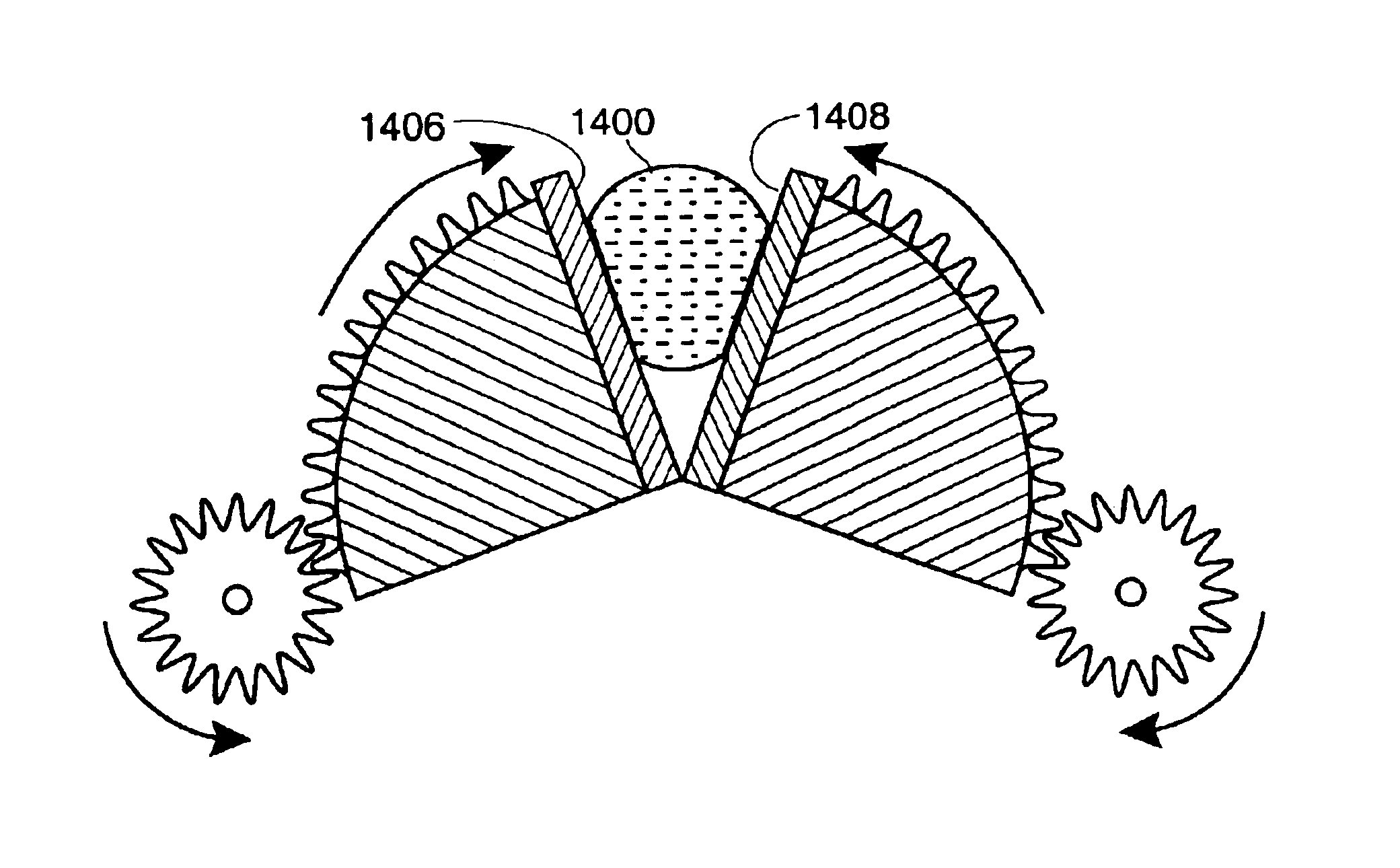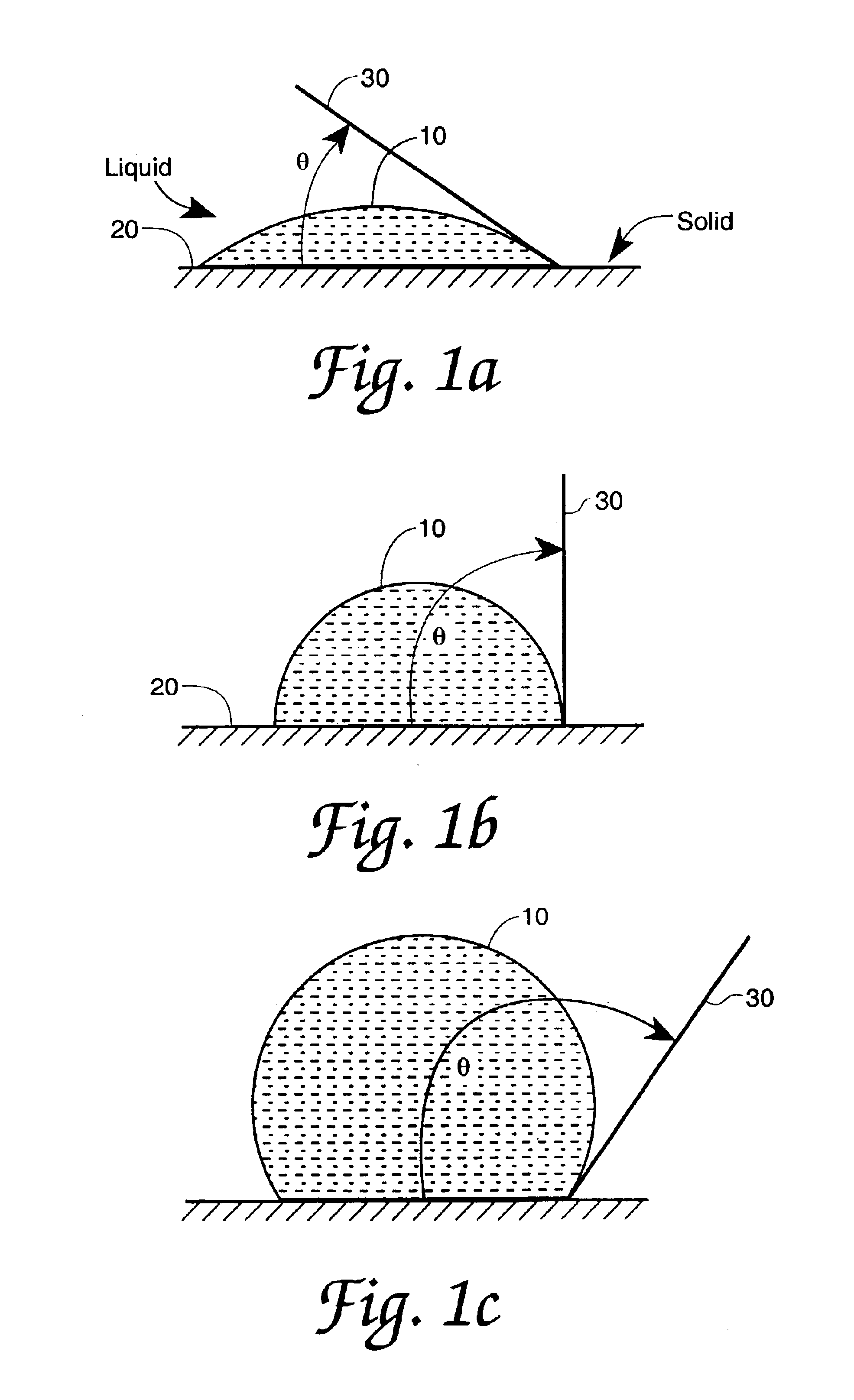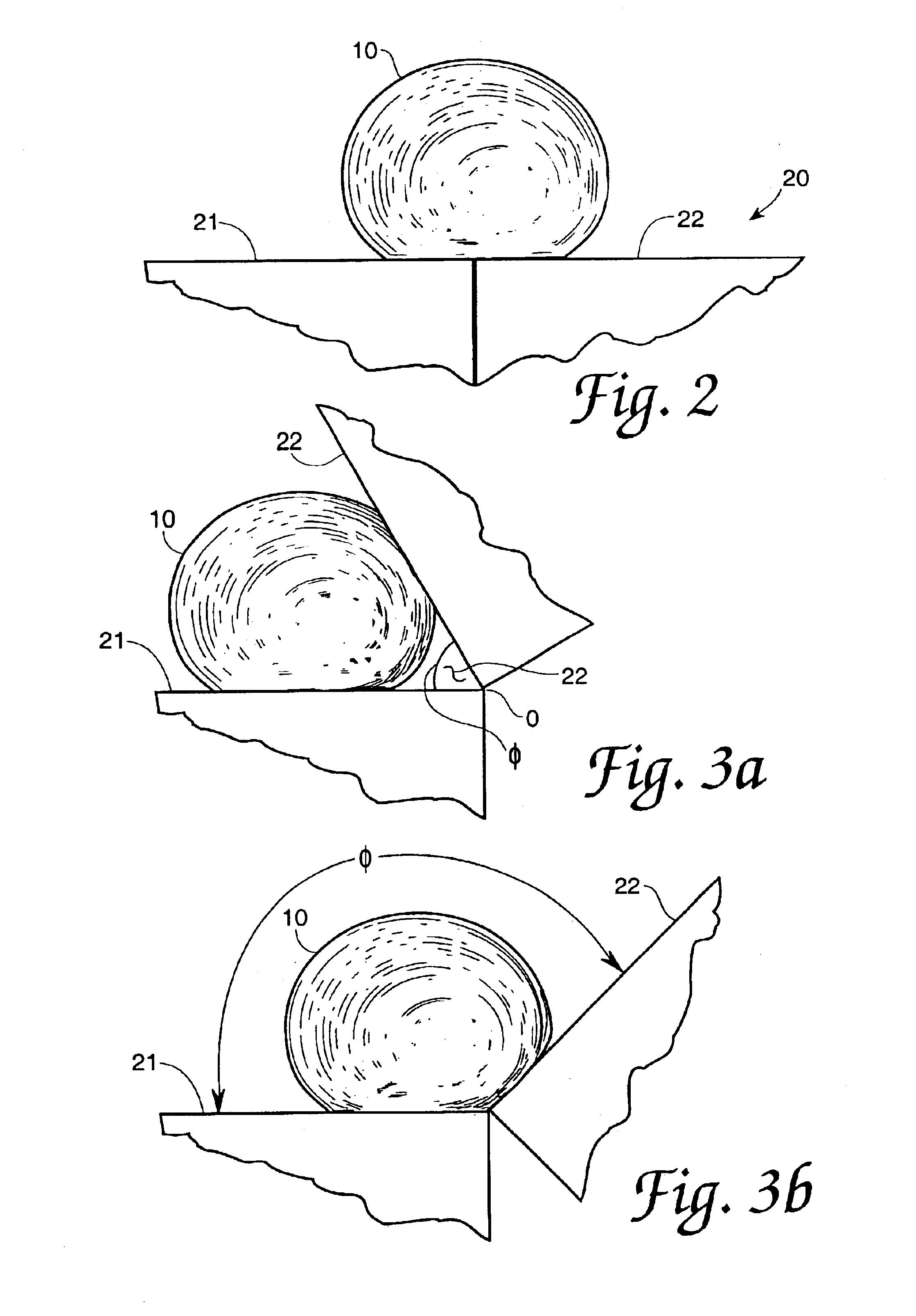Liquid to solid angle of contact measurement
a solid angle and measurement technology, applied in the direction of instruments, navigation instruments, coatings, etc., can solve the problems of difficult to perform the tilting plate method, expensive goniometer-mounted tele-microscopes, and techniques that may also have difficulty in measuring the contact angl
- Summary
- Abstract
- Description
- Claims
- Application Information
AI Technical Summary
Benefits of technology
Problems solved by technology
Method used
Image
Examples
example 1
An apparatus similar to that shown in FIG. 4 can be used to measure the contact angle of a non-wetting liquid on a solid surface. In this apparatus, the surface of interest can be the plate itself, a coating on the plate surface, or a piece of film mounted to the plate surface. An apparatus of this type can be very simple and inexpensive or as sophisticated as desired. Instruments of this type share common features however. For example, they are active in the sense that actual motion of the plates allows observation of the withdrawal of liquid from or the entrance of the liquid into the interstice formed by the plates.
This movement can be observed visually, using appropriate optical means such as a video microscope. Alternately this movement can be discerned using other sensing techniques, such as a laser beam aimed into the interstice formed by the plates and impinging upon a photocell placed opposite the laser beam as is shown in FIG. 7 of the drawings herein. When the FIG. 7 drop...
example 2
To determine the contact angle, θ, of a wetting liquid 10 on a solid surface 20 the apparatus 444 in FIG. 4 can be used with a small reservoir 30 to bring the liquid of interest in contact with the exterior portion of the interstice as is shown in the essential elements representation of FIG. 8 of the drawings. Alternatively, the measuring apparatus 444 can be inverted so that the liquid 10 can be placed at the intersection of the plates on the external edge surfaces of the plates as appears in FIG. 9 of the drawings. In this FIG. 9 representation, two additional plates, 904 and 906, plates located orthogonally at each end of the interstice 910, may be brought into endwise contact with the measuring plates 900 and 902 forming the included angle, φ, to prevent the liquid 908 from running off of the intersection of the measuring plates. In FIG. 9 the liquid 908 is shown as being excluded from the interstice 910 because the included angle, φ, is shown to be greater than the transitiona...
example 3
As mentioned previously, the apparatus described in Examples 1 and 2 is active in the sense that the plates forming the apex actually move either towards or away from one another during the course of a measurement. This does not however have to be the case. FIG. 10 in the drawings illustrates an apparatus intended to operate in exactly the same manner as the active devices described previously, but now the plates do not move. The FIG. 10 apparatus can best be thought of as a sheet of paper folded in half. Once this fold is accomplished, one end of the folded sheet is opened wide so that the included angle of the folded sheet on that end approaches 180 degrees. The other end of the folded sheet is kept tightly held together, so that its included angle approaches zero degrees. Note that the two sides of the folded sheet do not have to be mirror images of one another. The angle of the apex only has to vary in a known manner. If, now, a drop of liquid is placed anywhere in the folded sh...
PUM
| Property | Measurement | Unit |
|---|---|---|
| contact angle | aaaaa | aaaaa |
| contact angle | aaaaa | aaaaa |
| contact angle | aaaaa | aaaaa |
Abstract
Description
Claims
Application Information
 Login to View More
Login to View More - R&D
- Intellectual Property
- Life Sciences
- Materials
- Tech Scout
- Unparalleled Data Quality
- Higher Quality Content
- 60% Fewer Hallucinations
Browse by: Latest US Patents, China's latest patents, Technical Efficacy Thesaurus, Application Domain, Technology Topic, Popular Technical Reports.
© 2025 PatSnap. All rights reserved.Legal|Privacy policy|Modern Slavery Act Transparency Statement|Sitemap|About US| Contact US: help@patsnap.com



